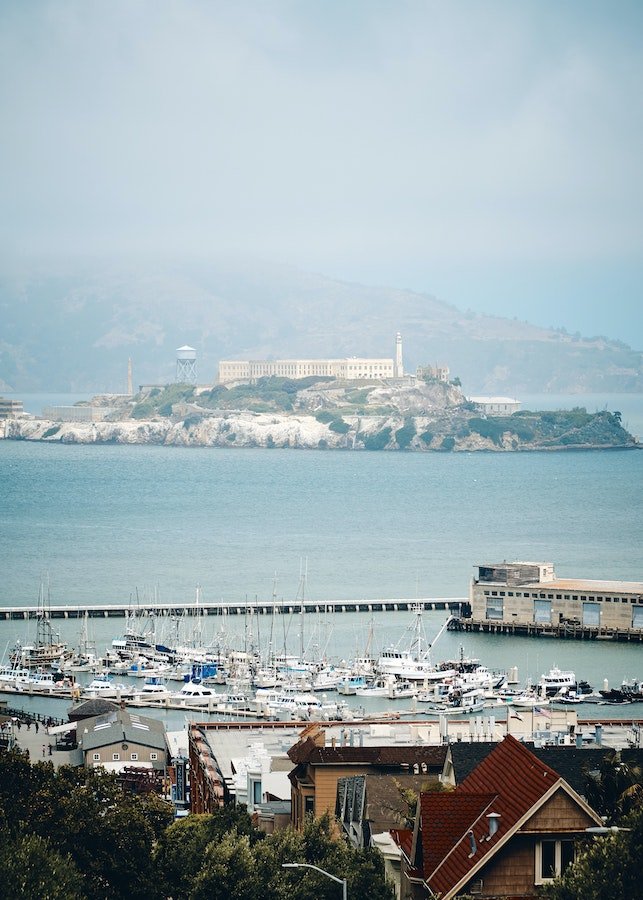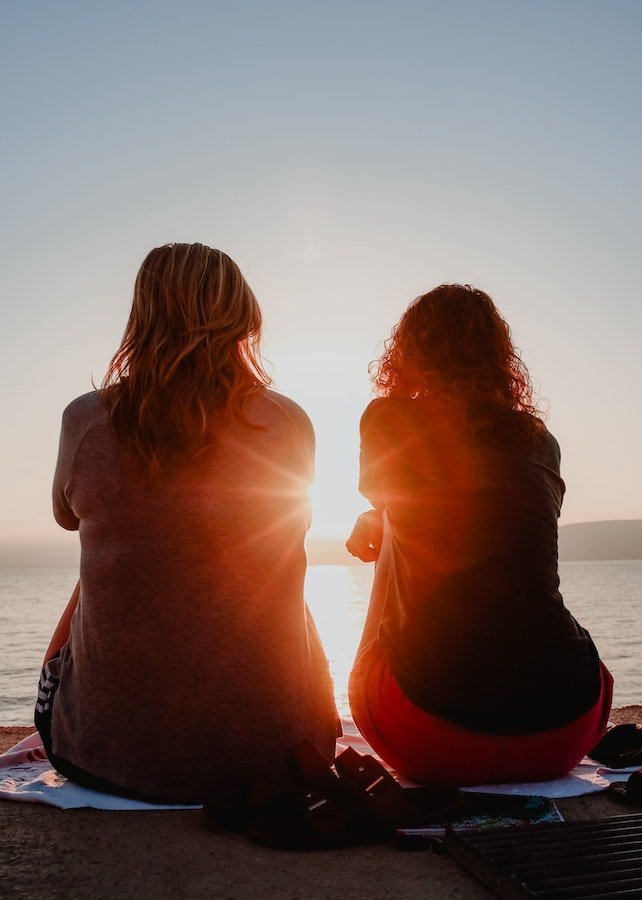
Reader Essay: How Swimming Alcatraz Helped Me Overcome Anxiety
This essay was reader-submitted for our Summer Essay Series on themes of growth, aging, transformation, and renewal.
Tomorrow, I am willingly jumping off a ferry and swimming 1.5 miles from Alcatraz to the shore. I must be nuts!
The thought paired with a visceral reaction in my gut as I drove into San Francisco and caught my first glimpse of the Bay. Then, logic kicked in, and I reminded myself that I had trained in the ocean for 16 months. I was prepared and ready for this race.
My ocean water swimming began in April 2020, when Covid-19 hit, and one of my favorite exercise routines—pool lap swimming—was no longer an option. All public pools were closed. But I knew I had to keep moving. I’ve suffered bouts of clinical depression and anxiety attacks since childhood. Learning how to cope and manage these feelings has taken 51 years of developing tools and strategies—one of which is exercise.
As a special education teacher who lives alone, being at home all day and away from my students created feelings of isolation and sadness. I began to experience intense anxiety and palpable fear that I would fall into a clinical depression. I felt myself sinking and found myself crying on the beach near my house, crying at the produce stand, and feeling overwhelmed. I used all the coping tools I had in my arsenal (including asking my doctor to raise my anti-depressant prescription), and then I tried something new: I signed up for the Alcatraz swim and began swimming in the ocean.
“I signed up for the Alcatraz swim and began swimming in the ocean.”
I live in Shell Beach, which sits on the Pacific in Central California. One morning in mid-April 2020, I stared at the ocean and decided to go for it, knowing I needed to begin training for the race. I managed to wriggle and squeeze myself into a second-hand wetsuit I bought a few years ago. But the water was so cold that it felt as if my face and head were on fire. I thought to myself, There is no way I can swim in the ocean!
But a few weeks later, I went into the water again, this time with a swim buddy, Pauly, who’d also signed up for the Alcatraz swim. Pauly loaned me a neoprene hoodie so my brain wouldn’t freeze in the 50-degree water. At first, we’d swim around four buoys in Avila—we could only stay in for 20 to 25 minutes—but then we began to lengthen our swims.
It wasn’t just the cold water that I feared, though. I also feared the sharks and there was very low visibility in the water; I often imagined a shark coming toward me, and I would become anxious and begin breathing erratically. I calmed myself by practicing deep breathing and swimming to shallower water. The more I practiced, the longer I could stay in the ocean, and the anxiety and fear began to dissipate.
When I awoke the morning of the race, I felt calm and ready. Pauly and I walked with the other 700 participants to the ferry, and I thought, You’ve got this. Soon after the ferry pulled up to Alcatraz, it was time to jump five feet off the ferry and into the water. Pauly ran and jumped, but I stopped at the edge and backed up. I deeply fear jumping off anything more than a foot. My heart was racing.
“I looked at the distant shore and the choppy water and I became anxious and fearful. Then the thoughts came in.”
When I finally jumped and surfaced, I was pleasantly surprised that the water was warm. The horn blew to start the race, and the swarm of swimmers kicking and paddling was intense. To avoid being struck, I surfaced and waded in place for a few minutes to get some space. I looked at the distant shore and the choppy water and I became anxious and fearful. Then the thoughts came in. You’ve got this. You have been training in the ocean for 16 months. Just keep swimming and remember your sweet nieces are at the finish line, and your father is watching over you. I kept swimming and finished the 1.5 mile race in 50 minutes.
As I drove home the next day, I realized the physical act of completing the swim wasn’t my biggest accomplishment—it was the realization that fear no longer owned me. Training and completing the Alcatraz swim was tangible evidence of my mental and emotional strength, which has grown exponentially throughout the years.
When I am swimming in the ocean, I feel connected to the natural world and I face my fears directly—fear of the unknown in the water, fear of the extreme cold, fear of low water visibility and of sharks. I literally swim through that fear, something I’ve been learning to do in my life outside the water. After an ocean swim, I always feel both exhilarated and grounded.
“Finally, at 51, I accept that fear and anxiety may come to visit my mind and body, but they won’t be moving in long-term any longer.”
Finally, at 51, I accept that fear and anxiety may come to visit my mind and body, but they won’t be moving in long-term any longer. My fear and anxiety will no longer lead me to chug a beer as soon as I wake up in an attempt to deal with anxiety; or leave me in the fetal position on the couch for days, unable to sleep or eat; or overcome by panic attacks that feel as though I have left my body. The endless negative thought loops no longer infiltrate my brain. I have tools and an inner strength that won’t let me sink that low again.
If I can swim through all of the unknowns in the mighty ocean, I can handle whatever lies ahead on land. I have learned to work with the fear and anxiety, so when the waves of stress come crashing into me, I surrender to the currents of life and keep swimming, with a deep inner knowledge that I am safe and I will make it to shore.
Stefanie Vallejo Monahan is a special education teacher in San Luis Obispo County, CA. She has a BA in Journalism and a MA in Special Education. She enjoys spending time in nature, travel, organic foods and creative endeavors. She is the proud aunt of 6 nieces and 2 nephews.




